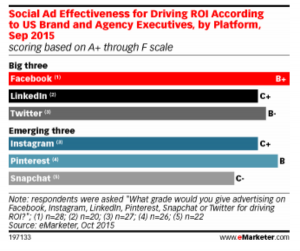Bruce Clay's Blog, page 19
December 18, 2015
SEO in 2015: A Retrospective for the Introspective – Virtual Conference Recap
SEO in 2015: A Retrospective for the Introspective – Virtual Conference Recap was originally published on BruceClay.com, home of expert search engine optimization tips.
If you’re the kind of person who follows SEO industry news closely, you may tend to glance over year-end retrospectives. But, there’s a chance you haven’t taken a personalized approach to an SEO year in review. Take a look at the year’s most shared and viewed SEO conference coverage as a growth exercise. Go through 2015’s game-changing SEO conference presentations, and consider what you plan to do to become better in 2016.
Standout SEO Presentations of 2015
If TIME Magazine were to do an issue on the SEO industry in 2015, the table of contents would look like this.
2015 SEO Story of the Year: Mobilegeddon
Runner-Up: More Mobile – App Deep Linking and Indexing
Runner-Up: The Penguin that Never Came
Runner-Up: RankBrain AI
15-Minutes-of-Famers in 2015: Millennials are the moment’s hottest market segment, but it’s an attention to audience that has staying power

We don’t publish TIME Magazine, but on the BCI blog, we do publish the SEO industry’s major news stories and marketing practices. A mobile-focused marketing perspective, Google’s MIA Penguin and link removal practices, and a search engine ranking algorithm that learns are the topics covered on today’s Virtual Conference SEO track.
First, a keynote to set the stage.
The Future of Search
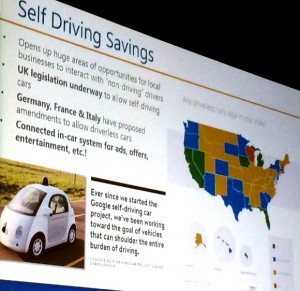
Forrester’s facts about self-driving cars, including map of states where it’s legal (above)
Duane Forrester is a futurist. A futurist studies predictions and possibilities about the future of life and society. Forrester’s Pubcon Las Vegas keynote in October was one to watch. The Microsoft search insider draws a roadmap for search, technology, and the digital marketing industry. Here are the looming landmarks.
Millennials, baby. They’ve got spending power. They’re uber connected. They’re the Internet’s reigning kings. Does your business cater to them? (Step 1: Figure out what that even means for your business.)
Mobile’s the word. The majority of web traffic is mobile, you know. Starbucks is a shining example of a brand that’s adapted to mobile. In the U.S., 11% of Starbucks transactions (order, pay, tip, get rewards, locate stores) happen with the company’s mobile app. Expect to see mobile payment becoming the norm in years to come; Apple Pay and other secure, phone-conducted commerce apps are about to blow up. Another growth area of mobile commerce is the rise in affinity programs. Starbucks turned being their customer into a community experience.
Self-driving cars rise. What would you do if your commute time became productive time? But don’t expect to get that found time for free. Self-driving car are also vehicles for captive audience advertising.
Machine learning is real. Computer processing resources have finally reached the level of efficiency needed to let the computers learn for themselves at large scale. We’re seeing machine learning at work in applications that predict winners of political races and sporting competitions, and software that recognizes faces along with age and gender. Search engines are putting machine learning to work to improve the quality of ranking algorithms, as we learned later this year when Google confirmed the existence of RankBrain; more on that below.
Digital butlers, aka agents, at your service. Here is the future of search. Search wants to bridge user intent and the experiences the world (businesses, organizations, communities, governments) has to offer. A digital agent will do your bidding and proactively find ways to satisfy your tastes and preferences. Duane’s real-world examples are included in the full presentation liveblog.
Your data is showing. Everyone reading is leaking data at a startling rate. Data is a commodity that is collected. Duane calls data the new oil.
Read our liveblog coverage of Duane Forrester’s Pubcon Keynote on the Future of Search to look closely at each of these revolutionary stops on the search roadmap.
Since this keynote, Duane was announced as the new VP of organic search operations at BCI. If you want to work with the former Bing search industry spokesperson, partner with the digital marketing agency dream team.
Next, the 2015 search marketing conference sessions that get into the nitty gritty.
Mobile SEO Everything

Google’s Gary Illyes at SMX East
April 21, 2015, the infamous Mobilegeddon, was the date felt round the SEO world. It was the date that Google announced would officially usher in mobile-friendliness as a ranking signal. Five months later, at SMX East, Google Webmaster Trends Analyst Gary Illyes shared “3 Things Google Wants You to Know about Making Websites Mobile Friendly.” Here he talks about the properties of a web page Google uses to judge mobile-friendliness. He talks about app indexing and how to get your app to show up in Google SERPs. And he explains the significance of predictive search app, Google Now, and its key characteristics: voice search and the tap-to-search feature Now on Tap.
In this same session, Stoney deGeyter does a deep dive of mobile SEO, from mobile configuration to common mobile website mistakes. Marcus Tober wraps up the session by sharing a study of mobile ranking factors.
Read it all in our liveblog coverage of Getting Mobile Friendly to Survive the Next Mobilegeddon.
Mobile apps are a big piece of the conversation around mobile SEO and mobile marketing. On this topic, you’ll want to review presentations by Google Webmaster Trends Analyst Mariya Moeva, Emily Grossman and Igal Stolpner. Moeva overviews Google’s documentation on how to get your mobile app (both Android and iOS apps) in the search engine’s index. Grossman builds on Moeva’s recommendations with tips for setting up your domain, app and server for Google indexing. Stolpner provides context for the app indexing conversation with case studies and stats that show how app indexing can benefit a business.
Read all these presentations in our liveblog coverage of SMX East’s Beyond the Web: Why App Deep Linking Is the Next Big Thing.
Not to be overlooked in a mobile SEO and marketing conversation, Apple is a big player with a different set of optimization rules than Google. Grossman is an Apple search and iOS app specialist, who shares her tips for optimizing brand visibility on Apple’s technology stack in the SMX East session How Apple’s Changing Up Search: From Siri to Safari to Spotlight. With 3,000 iPhone sales a minute, be sure not to pass over Apple opportunities.
Link Building Tactics in the Penguin Age
The Google Penguin update that was highly anticipated but never came in 2015 was a major SEO story. The Penguin update expected to pardon reformed link spammers is still ahead, while SEOs continue to do link clean-up while sharing link audit best practices with others. Megan Geiss outlines the link removal process. Sha Menz promotes the penalty recovery power of the Google disavow file. And Eric Enge gives marketers a link building attitude adjustment with content marketing inspiration.
Read all the expert’s link building and clean up tips in our liveblog coverage of SMX East’s Link Building, Auditing and Removal.
SEO in the Machine Learning Environment
2015 was the year for AI IRL. Machine learning, a process where a computer teaches itself, is a type of artificial intelligence. And, Google says it uses a machine learning ranking algorithm called RankBrain. So yes, the future has arrived. What does Google’s AI algorithm mean for search engine optimizers? Two pertinent points to note from the year’s liveblog coverage.
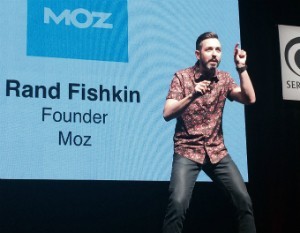
Rand Fishkin on stage at Pubcon Las Vegas
First, you must account for and optimize for engagement ranking factors. In Rand Fishkin’s Pubcon keynote, we read that there are the traditional SEO optimization factors we have always accounted for: ranking inputs such as keyword targeting, quality and uniqueness, crawl/bot friendliness, snippet optimization, UX/multi-device optimization. Additionally, machine learning demands that SEOs optimize for searcher outputs such as CTR, long-clicks, content gap fulfillment, amplification and loyalty, task completion success.
Get all the information in our liveblog coverage of SEO in a Two Algorithm World.
Second, keyword research and keyword optimization have evolved. Craig Paddock describes the shift from a keyword focus to a content and topic oriented research mindset. He shares lots of tools and research starting points. Ash Nallawalla gives content writers a spreadsheet for documenting keyword competitor research from which you can select your organization’s winning phrases. Bruce Clay adapts the traditional SEO keyword research and optimization process to today’s semantic search analysis and voice search query behavior.
Read it all in our liveblog post of the Pubcon session Keywords and Keyword Research.
Bonus SEO Topics: Business Operations and Q&A
Worth mentioning are a couple sessions that don’t fit cleanly into our above story arch but which you might find an insightful read.
If you’ve ever wondered how your SEO operation might scale, read about how to grow a successful SEO agency from the Pubcon coverage of Building an SEO/SEM Agency.
The always popular AMA (ask me anything) style session, when SEOs can ask search engine reps their pesky optimization questions, hits many topics including the Knowledge Graph, AJAX and JavaScript crawling, social signals as ranking factors, content syndication best practices, HTTPS, and authorship markup. Read Gary Illyes and Duane Forrester’s thoughts on these topics and more in liveblog coverage of SMX East’s Meet the Search Engines.
December 17, 2015
Paid Search Marketing Lessons from 2015: Our PPC Virtual Conference Recap
Paid Search Marketing Lessons from 2015: Our PPC Virtual Conference Recap was originally published on BruceClay.com, home of expert search engine optimization tips.
Search engine marketing grew up a lot in 2015. Advertisers began looking beyond Google desktop PPC ads to mobile ads across Google, Yahoo and Bing, as well as new sponsored post opportunities on many major social networks. New ad formats targeted the mobile user specifically, and verticals for automotive, hotel, insurance and other industries sprang up, each with its own specific ad types. Remarketing ads (which display to people who previously clicked on an ad or visited a web property but did not convert) became more prevalent; for instance, remarketing in Bing ads became possible for Search and Shopping campaigns.
Our livebloggers captured news and lots of in-depth information from top paid search experts throughout the year. Here we present the four most popular of those to bring search marketers up-to-speed on 2015 developments in pay per click.
Using AdWords Scripts for Relevancy-Triggered Automation
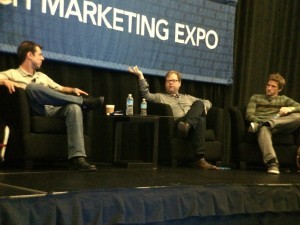
AdWords Scripts session at SMX West 2015
First up at our PPC virtual conference, while your brain is still fresh and your morning caffeine still running through your veins, let’s talk scripts! While AdWords scripts weren’t new in 2015, we did get some great tips during this year’s SMX West session “Mastering AdWords Scripts for Search Marketers.”
With an AdWords script, your paid search ads can adjust automatically based on external data, such as from a Google Drive document, calendar, or even a third-party API. For example:
An ice cream store’s ad might be triggered only when the temperature goes over 75 degrees.
A restaurant could offer a special happy hour deal only when it’s raining.
It’s not hard to create these types of flexible ads using AdWords scripts, which are pieces of code that let you automate AdWords reporting and management. Scripts give search marketers more flexibility than automated rules and require less skill (and server resources) than APIs do.
The session’s three expert speakers — Frederick Vallaeys, Steve Hammer and Patrick Bennett — give you:
Detailed explanations to understand scripts (variables, functions, etc.)
Ways to tweak prebuilt scripts for your purposes
Three premade scripts you can use for AdWords reports and links to 43 additional templates
This AdWords-focused liveblog will get you scripting so you can make your pay-per-click ads more adaptive and powerful.
Mobile PPC Advertising Takes Off
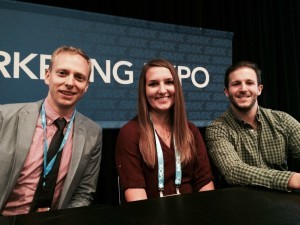
John Busby, Amy Bishop and Aaron Levy
With more than half of searches occurring on mobile devices, advertisers simply must have a mobile strategy these days. But before you dive in with your ad dollars, it’s important to understand your mobile audience — because mobile users behave differently, and have different motives, than desktop users. To give you a jump on your own mobile persona research, Aaron Levy shares fascinating stats from his own mobile research on the four types of mobile searchers and their typical behavior, wants and needs.
Second up is Amy Bishop, talking about the importance of location targeting for mobile advertising. Searches containing “near me” have grown exponentially — and 80 percent of those searches occur on a mobile device. If you’re not targeting the best location radius and timing for your mobile ads, you may be wasting money.
Last in the lineup, John Busby zeroes in on the two PPC ad formats that support phone calls:
Enhanced campaigns
Call-only campaigns
The session “Winning at Mobile PPC Advertising” liveblog contains the full slide decks and in-depth information to help you take advantage of mobile advertising to drive ecommerce.
Watch Out: How to Prevent AdWords Mistakes

Speakers David Szetela and Mona Elesseily
In this session from Pubcon Las Vegas, PPC pros David Szetela and Mona Elesseily discuss the changing SERP landscape — with mobile gaining over desktop and the layouts changing for paid and organic listings. They list a few dozen specific mistakes that advertisers commonly make and, more importantly, how to avoid them. Here are a few big ones:
Not using all ad formats available to you. This includes the non-keyword-based ones like dynamic search ads, call-only campaigns (for mobile), and Google shopping.
Not getting mobile and reallocating mobile spend to desktop. People may be searching on mobile first even though they’re converting on desktop.
Missing key landing page elements. For example, make sure your landing pages have a headline, image, CTA(s), company info, bulleted benefits, testimonials, etc. And your mobile landing pages should follow a slightly different format.
Trusting the Search Query Tool too blindly. Often, negative keywords get added at the campaign level, but you need to do research using a broad-match, single-word variation of the exact match keyword. Szetela gives step-by-step tips for doing your keyword research correctly.
These and many more common problems are remedied in “Major AdWords Mistakes and How to Prevent Them.”
Keynote: Google AdSense, AMP and More
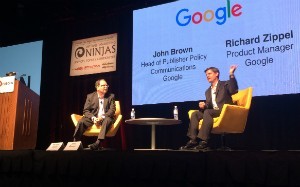
Pubcon keynote
We wrap up our Virtual Conference PPC track with a power session by two Google execs. Richard Zippel, product manager for publisher quality, and John Brown, head of publisher policy communications, answer paid search marketers’ questions in an ask-me-anything (AMA) style. Topics range from ad policies that didn’t work to what the search engine is doing for advertisers in the face of rising ad blockers. Find out what Google says about:
How Accelerated Mobile Pages (AMP) is Google’s solution to the “systemic problem” of ad blockers, particularly for mobile advertisers.
What the EU cookie law means for webmasters and American site publishers.
How the fight against referral spam is growing.
How advertisers can keep site speed and load times fast.
Dive in to the liveblog of Pubcon’s “Google AdSense AMA Keynote” for the full scoop.
December 16, 2015
Quality Over Quantity: Content & Social Media Marketing Lessons from 2015
Quality Over Quantity: Content & Social Media Marketing Lessons from 2015 was originally published on BruceClay.com, home of expert search engine optimization tips.
If one lesson emerged regarding content in 2015, it was that digital marketer’s strategy should revolve around quality over quantity. Quality necessitates editorial planning, audience understanding and persona research, as well as the social media marketing and PR outreach. Throughout the year, experts in our field (including Gary Illyes, Marty Weintraub, Wil Reynolds, Lisa Buyer and Mindy Weinstein) shared their tried-and-true tactics for creating what Rand Fishkin lovingly refers to as 10X better content.
In today’s content-focused track of the 2015 Virtual Conference, read up on these tactics and find out how you can apply them to your own content marketing.
Connecting with Your Audience #CRITICAL
Who is your audience? Whatever your vertical, you’ve got millennials in your audience — and they represent $200 billion dollars in annual buying power. If you want to tap into that segment, Google Trends Analyst Gary Illyes (a millennial himself) has some advice for marketing to millennials. During Reaching Gen Y & Z with Google’s Gary Illyes we learn:
Fast facts about Gen Y and Gen Z millennials
How Google is tailoring its products and service for millennials
How to make millennials (and users at large) feel special and like life is easier with your digital marketing
Social Promotion and Press Outreach #NECESSARY
Creating content is only want part of content marketing — you’ve got to get those amazing articles, ads, infographics, videos, images, listicles, etc. into the world to entice users and interest influencers. Get actionable tactics to take your content marketing to the next level with Search and Social Content Strategy at SMX East.
Know your audience. Inside and out. This SMX session featured Mindy Weinstein, Bruce Clay, Inc.’s Director of Training, who made it clear that personas are key. She shared actionable tactics, like using SurveyMonkey.com and talking to customer service representatives who interact with clients every day, to develop those personas.
Google’s goals haven’t changed. Bill Hartzer, senior SEO strategist at Globe Runner, has been doing digital marketing since 1996. Google emerged onto the search scene in 1998, and, bottom line, their mission is the same: to provide the freshest and most relevant content in search results.
Push your content to the next level. Jordan Kasteler, digital strategist at MWI, issued a challenge to content marketers: you should spend as much time promoting a piece of content as you do creating. Read the liveblog to find out how and why.
The SMX East Social and Mobile PR Secrets session is all about garnering press coverage. Get tips from three PR veterans who are experts at creating buzz. Lisa Buyer, Murray Newlands and Marty Weintraub share:
How to kick off press outreach. What media outlets and journalists should you be targeting?
Tips for enticing journalists. Once you’ve identified who you want covering your brand, these tips will get them to go from deleting your press release to reading it and turning it into a story.
The role social media plays in creating relationships with reporters. Are you sharing the reporters’ content? Are you interacting with them in meaningful ways? Learn how to cultivate relationships with reporters.
Content Marketing Strategy #ESSENTIAL
 In The High Cost of Free Traffic, SEER Interactive founder Wil Reynolds highlighted the importance of content-focused strategy rather than keyword focused strategy. As an example, he talked about Airbnb’s disruption of the expected vacation rental SEO. Airbnb has created such exceptional content around vacations and travel, all while building buzz about their brand — so much so that it no longer matters if you rank for “vacation rental in X city” because users are now searching for “Airbnb + city” or “Airbnb travel guide.” Find out more about Airbnb’s mega-success and other brands doing content marketing right in Reynolds’ Pubcon keynote.
In The High Cost of Free Traffic, SEER Interactive founder Wil Reynolds highlighted the importance of content-focused strategy rather than keyword focused strategy. As an example, he talked about Airbnb’s disruption of the expected vacation rental SEO. Airbnb has created such exceptional content around vacations and travel, all while building buzz about their brand — so much so that it no longer matters if you rank for “vacation rental in X city” because users are now searching for “Airbnb + city” or “Airbnb travel guide.” Find out more about Airbnb’s mega-success and other brands doing content marketing right in Reynolds’ Pubcon keynote.
There’s more on the content and audience track. Check out these other liveblogs of important 2015 conference sessions on content, social media marketing and audience:
Guy Kawasaki’s 10 Tips: How to Perfect Your Marketing
SEO Copywriting Style Guide
SEO, Paid Search and Social Media Strategy Integration
Fresh Tips on Designing Ad Images, for Non-Designers
December 15, 2015
SEO, PPC & Content Virtual Conference: 2015’s Liveblog Recap
SEO, PPC & Content Virtual Conference: 2015’s Liveblog Recap was originally published on BruceClay.com, home of expert search engine optimization tips.
Millennials who? Mobilegeddon what? Maybe you watched the search marketing and social media news unfold in real-time all year, attending a conference like SMX or Pubcon, or plugged into this blog or Twitter to stay in the industry know. Maybe you didn’t. Maybe you had a business to run and clients to make happy and would occasionally come up for air to discover that the digital marketing world had, overnight, become obsessed with a single generation and that Google had officially decreed that everything revolves around the smartphone.
Here on the BCI blog, we publish updates to keep digital marketers current on new tactics and evolving perspectives. To do so, we send livebloggers to major digital marketing conferences so readers can get the 411 from the industry’s search marketing, content, conversion and advertising experts. This year, Virginia Nussey and I covered more than 85 sessions live from SMX West, SMX Advanced, SMX East, Pubcon, SEJ Summit Santa Monica and BIA/Kelsey NEXT in Local.
Why so many conferences and liveblogged reports? Because a lot happens at live, in-person events. Google makes major announcements about new features and initiatives at these shows. And, top minds in digital marketing share their real-world challenges and describe solutions so we can all learn to be more technical, more personal, and more on point with our business’ online presence. It’s important that search and social marketers attend conferences for continuing education, or at least know what happens at them.
So, as we wrap up the year, we present an early holiday gift. We’re packaging up the most high-impact liveblogged sessions of the year to create a virtual conference you can follow along with each day this week. Or, pick and choose the tracks that interests you. Either way, this virtual conference is your fast track to getting up to speed on what happened in digital marketing in 2015.
Wednesday, Dec. 16: Content, Social Media & Understanding Your Audience
Thursday, Dec. 17: Search Engine Marketing, PPC Advertising
Friday, Dec. 18: SEO Milestones of 2015

Content, Social & Understanding Your Audience: Day 1
Google SERP Eye-tracking: 2005 vs. 2014
Reaching Gen Y & Z with Google’s Gary Illyes
Social and Mobile PR Secrets
Search and Social Content Strategy
SEO Copywriting Style Guide
The High Cost of Free Traffic: Pubcon Keynote by Wil Reynolds
Search and Social Content Strategy
Guy Kawasaki’s 10 Tips: How to Perfect Your Marketing
PPC/SEM: Day 2
Google AdSense Keynote: Ad Blockers, Accelerated Mobile Pages & EU Cookies
Mastering AdWords Scripts for Search Marketers
Major AdWords Mistakes and How to Prevent Them
Winning at Mobile PPC Advertising
Search Engine Optimization (SEO): Day 3
SEO in a Two Algorithm World: Pubcon Keynote by Rand Fishkin
Building an SEO/SEM Agency
The Future of Search: Duane Forrester’s Pubcon Keynote Liveblog
How Apple’s Changing Up Search: From Siri to Safari to Spotlight
Keywords and Keyword Research
Link Building, Auditing and Removal
Meet the Search Engines: Bing’s Duane Forrester and Google’s Gary Illyes Answer SEO Questions
The year’s liveblog posts we’ve hand-selected for each track paint a picture of how digital marketing evolved in 2015. Most importantly, you’ll be reminded (or read for the first time) what works (and doesn’t) for search engine optimization, pay-per-click advertising, content marketing, and audience analysis. Stay with us all week to read our summary of top speakers’ presentations and get our takeaways from these sessions. Let 2015’s final digital marketing conference commence!
December 10, 2015
Connecting the Online World to the Offline World with Data: A Round-table Chat at #BIAKNEXT
Connecting the Online World to the Offline World with Data: A Round-table Chat at #BIAKNEXT was originally published on BruceClay.com, home of expert search engine optimization tips.
About 90% of buying is offline, but it’s very influenced by online. Attribution, then, is more important than ever. BIA/Kelsey Managing Director Rick Ducey (@RDucey) moderates a round-table discussion with three professionals, each offering a different perspective on data and analytics:
Grace Chan, VP Product at Wanderful Media
Sherry Thomas-Zon (@sthomaszon), Chief Marketing and Revenue Officer at Retailigence
Elliott Waldron (@ElliottWaldron), Director of Analytics at Placed, Inc.
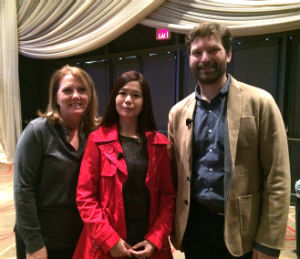
Speakers Thomas-Zon, Chan and Waldron at BIA/Kelsey’s NEXT event
Receipts vs. point of sale data — how does this inform campaign planning and the purchase journey?
Chan: Receipt data is a part of the input — you can quickly come up with profiles that you can infer from receipts. Look at a grocery data receipt and find out information about the household and demographics — are there diapers on the receipt, for example? We use this information to target user needs and create offers that will appeal to them.
Statistically meaningful data can come from whether or not coupons were used. So it’s important to get that data from receipts, as well. Did the consumer use the offers you thought they would? That tells you something.
Who are you working with and how?
Thomas-Zon: Historically, we’ve worked in the digital domain with advertisers. We’ve worked with Mars candy to help get product off the shelves. They come to Retailigence for a layer of inventory visibility in certain markets. We are able to provide regional targeting. As we move into 2016, we’re focusing on capturing inventory-level data over time and provide that back through analytics dashboards.
Part of what you do as a data scientist is to collect and torture insights out of data and then find ways to represent those insights. How do you do that when working with tons of data?
Waldron: That’s a really hard problem. As a data scientist, you want to be able to show that things aren’t that simple and provide different ways to look at the data. The challenge with any analytics product is letting the data tell its story in the simplest way. We provide a lot of metrics, but 90 percent of what people care about is sales lift and in-store visitation. The nature of the metrics should be actionable, then — for example, we need to reach more females, etc.
More and more, marketers are becoming data scientists. They know they can zero in on mounds of data and find what’s crucial.
Handle consumer expectation — if your ads are too specifically targeted, it can freak them out. Make sure to tone it down.
SMBs have different problems than national brands. Tell us what’s going on?
Thomas-Zon: National brands have some verticals that are highly dependent on local retailers, like home goods or appliances. While the national brands are creating national campaigns, there are third-party services emerging to help the SMB. These bring on local retailers to help the national brands. In the CPG area, those mechanisms exist to help those business. But in apparel, for example, they haven’t really had the tools.
What’s going to be significant when it comes to attribution in 2016?
Thomas-Zon: The in-store experience will improve — mobile will be able to get more personal, beacons aside. Mobile is the doorway to shake a hand in the store.
Waldron: Agencies are wanting to be able to put all their different channels under the same measurement regime. Companies like Placed are moving in the direction to support that.
Are Millennials That Different? USC PhD Discusses Millennial Motivation – #BIAKNEXT Liveblog
Are Millennials That Different? USC PhD Discusses Millennial Motivation – #BIAKNEXT Liveblog was originally published on BruceClay.com, home of expert search engine optimization tips.
As digital marketers, we’re always trying to learn more about millennials’ behavior — they are, after all, the largest demographic in existence. But is the super social behavior of millennials really that different from other groups?

Dr. Karen North
“We are all social animals: this has never changed and it never will. People don’t change. The only thing that changes is the technology that mediates our social actions. And everything we used to do in person we now do digitally,” posits Dr. Karen North, director of USC Annenberg’s Digital Social Media Master’s program. “Social media is how we connect and communicate. And it is blind to geographic proximity. We live in both our local communities and our digital online communities.”
In this morning’s keynote address at BIA/Kelsey’s NEXT conference in Los Angeles, North talks about millennial motivation, marketing and media.
Who Are Millennials?
By definition, millennials:
Reached adulthood beginning around 2000
First born around the time of the Apple Mac computer
Last born just after the launch of the Internet
Never really knew a time without immediate access to friends, information, goods and services
Millennial Priorities
Their relationship with technology is their defining quality. They expect technology to work and be easy. They are very social online and in real life (sharing, chatting, asking advice, etc. during all activities, including shopping). They are always on: collaborating, cooperating, and communicating all the time, including with brands. Mobile is their technology of choice.
And yet, on the negative side …
Dr. Jean Twenge (Generation Me) has described millennials as characterized by negative traits such as:
Narcissistic
Entitled
Desire for things to be easy rather than needing to work for them
Some studies (UCLA Freshman Survey) observed superficial values:
More likely to value wealth
Less likely to care about politics
Less likely to care about a “meaningful philosophy of life”
Detached from institutions
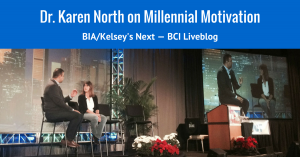 Are Millennials Different?
Are Millennials Different?Millennials use cell phones rather than land lines. They prefer digital newspapers to home delivery. They do not get cable or satellite television. In fact, they’re not even buying televisions. However, their interest in television is bigger than ever.
Your father’s social media included:
Gathering at schools and water coolers to talk about what we all heard or saw last night
Listening to the Top 40 to discover new songs
Having the same information as everyone else, and wanting to discuss it with others
Anticipating with friends what would come next
National dialogues
The previous generation shared these moments despite the fact that events were broadcast just once:
Nixon resigned
JFK was assassinated
Man landed on the moon
Little Ricky was born
Roots aired
Charles and Diana were married
JR was shot
Johnny Carson took his final bow
John Lennon was killed
M*A*S*H aired its final episode
Fonzie jumped the shark
Shared experiences are not new. It’s just that now we don’t share them at the same time, as people did in years past.
Millennials do not share moments in the same way that past generations did. They consume media on their own terms, according to their own schedules, and in their own way. They share by posting opinions and forwarding information to their audiences and friends. They receive and consume information from each other. They binge watch. They use DVRs, etc.
New technology does meet our needs because everything is now available at a click and that is convenient for us.
But there are unexpected consequences of the digital age. We no longer have the same:
Attention span
Delay of gratification
Tolerance of boredom
Experience of failure and disappointment
Appreciation of opposing viewpoints
Desire for needs to be met immediately
The Post Mobile Era: Keynote with Robert Scoble at #BIAKNEXT
The Post Mobile Era: Keynote with Robert Scoble at #BIAKNEXT was originally published on BruceClay.com, home of expert search engine optimization tips.
Robert Scoble (@Scobleizer) studies the future — that’s literally his job description as a futurist at Rackspace. In this keynote for the BIA/Kelsey NEXT conference in Los Angeles, he’s going to share what’s on his radar as the major disruptors and game changers headed our way.

Beacon Technology
Straight away, he’s talking beacons. Levi’s Stadium in Santa Clara is wielding beacon technology to great success. Scoble reports that soon, the technology could develop so that when a fan enters the stadium, the giant screen lights up and welcomes him or her to the arena. He then imagines said fan will flash a selfie with his name lit up behind him. This is the future of digital marketing.
Beacons, he says, are little radios that cost less than $10. With such a low cost, he predicts their presence will explode before we know it.
Tapingo and the Internet of Things
More is coming up than beacons, though. Scoble wants to talk about Tapingo, an app that is disrupting the way students at Santa Clara University get their morning coffee fix. Seventy percent of transactions at the university are conducted with Tapingo. It lets users order coffee with a few taps — the app tells the students when they can pick up their order, and they just walk in and grab it. This technology also lets a person pass Tapingo dollars back and forth with other users, thereby creating a new economy, as well.
“The Internet of things has changed the way we interact with things,” Scoble says.
Today’s soda machines are even different. The back end lets the soda machine proprietor know what inventory needs to be replaced in real time — no more going around and checking them and then heading back to a warehouse. Data and intel save businesses like this millions of dollars over time, Scoble says. Not to mention, you can even use Apple Pay at the savvy machines.
What else is Scoble excited about?
Magic Leap
Snapchat glasses
ODG night vision goggles
Virtual malls
Amazon Echo
Mercedes Benz self-driving car
Oculus Rift
“I don’t care how freaked out you are by this stuff. You’re going to use it,” he said.
What happens when you can’t get in an arena without enabling beacons? What happens when certain app functionality doesn’t work? Before long, everyone will be using it, regardless of initial hesitation. Beacons and other technology are designed to make your life easier and/or better, so we, as users, end up handing over our data.
“We live in a convenience-based economy. Uber was just one of the big guns — every industry is going to be changed by data. If you don’t disrupt your industry, someone else will,” Scoble says.
If you don’t disrupt your industry, someone else will. –@Scobleizer
Click To Tweet
What future technology are YOU paying attention to in this post-mobile era?
December 7, 2015
2015 Search Quality Rating Guidelines Checklist: Aligning with Google’s Focus on Usefulness
2015 Search Quality Rating Guidelines Checklist: Aligning with Google’s Focus on Usefulness was originally published on BruceClay.com, home of expert search engine optimization tips.
Google’s latest update of its Search Quality Rating Guidelines shows a shifted focus at the search engine, and consequently, for SEOs. For years, the buzzword for search engine optimization has been “relevance” — making your site the most relevant result for a searcher’s query. But as Duane Forrester, our new VP of organic search operations, observed: “It’s all about usefulness today and moving forward. The goal of the search engine is simple: increase searcher satisfaction. That’s why ‘useful’ is the new watchword. Previously we said ‘relevant,’ but really we all meant ‘useful.’”
 Google annually updates its internal guidelines document that tells hired human quality raters how to evaluate sites as part of Google’s ongoing experiments. We in the search industry usually get only leaked tidbits and summaries to read. But last month, in a rare gesture, Google published the 2015 guidelines as a PDF for all to read.
Google annually updates its internal guidelines document that tells hired human quality raters how to evaluate sites as part of Google’s ongoing experiments. We in the search industry usually get only leaked tidbits and summaries to read. But last month, in a rare gesture, Google published the 2015 guidelines as a PDF for all to read.
While it doesn’t reveal any ranking formulas or algo secrets, the 160-page document complete with many examples and screenshots does offer a coveted view of what the search engine considers priority. As Google’s announcement states, “the guidelines reflect what Google thinks search users want” and therefore can help webmasters and business owners “understand what Google looks for in web pages.”
The guidelines are not the algorithm. But they do show what Google’s focusing on, and that’s worth paying attention to.
What’s important for business owners is not all of the nitty gritty technical details. Leave those to your SEO. Instead, business decision makers need to glean what Google’s focus is so they can allot budgets and assign priorities correctly in a website strategy that’s aligned with what Google rewards.
Aligning Your Website with Google’s Priorities
Search engine priorities change over time, and your SEO strategy has to adapt. When you compare this 2015 version to previously leaked Google quality rater’s guidelines (as Jennifer Slegg does here and here), the differences point out how Google’s focus is shifting. The two biggest changes are:
Mobile everything: Not only is there a whole new section devoted to mobile quality, but also most of the examples now show screenshots taken on mobile devices.
Needs Met focus: A new rating scale judges how fully a web page result meets a mobile searcher’s need. Any site that is NOT mobile-friendly automatically fails this criterion. The entirely new section for judging Needs Met proves that Google is all about satisfying the searcher’s needs.
Here’s our checklist for making sure your SEO campaign aligns with Google’s priorities.
Mobile, Front and Center
Is your site really mobile-friendly?
Earning a passing grade on Google’s Mobile-Friendly Test tool is the bare minimum required for all web pages and apps now. Beyond this, you must make sure that tasks are easy to accomplish with a mobile device. From the guidelines, here’s a checklist you can use to evaluate how your site performs with a smartphone:
How easy/hard is it to fill out forms or enter data?
How does the site or app behave on a small screen? Are all features usable?
Is the content legible without requiring left-to-right scrolling to read text?
Do images fit on a small screen?
How easily can someone navigate? Are menus, buttons and links large enough?
What happens on your site when Internet connectivity is inconsistent or slow?
Needs Met or Not
How well does your site anticipate and fulfill a mobile user’s needs?
Another entirely new section added to Google’s quality rating guidelines is called “Needs Met Rating Guideline.” Here’s the description, which is clearly targeting MOBILE users’ needs (from Section 13.0):
Needs Met rating tasks ask you to focus on mobile user needs and think about how helpful and satisfying the result is for the mobile users.
To get a high quality rating in the Needs Met category, a search result and its landing page should:
Require minimal effort for users to immediately get or use what they’re looking for.
Satisfy all or almost all users looking for the same thing (so that they wouldn’t need to see additional results).
Provide trustworthy, authoritative, and/or complete information that is helpful.
A mobile user’s intent differs from that of a desktop or even tablet user. (Tip: Aaron Levy’s SMX presentation covers mobile audiences in depth.) Evidence of this is found in the new mobile section of Google’s Search Quality Rating Guidelines, where page after page of examples show what mobile users probably want when they search for various spoken or typed queries. At one point, raters are instructed to “think about mobile users when deciding if queries are [a particular type]. Use your judgment here.”
The takeaway for mobile SEO marketers as well as for app/website owners is this: Think about what mobile users may be trying to do, and make sure that your site fulfills these things as directly as possible. Google is all about satisfying mobile users’ needs; you should be, too.
Answering this question takes some serious thought, but ultimately pays off in spades.
Purpose-Driven Pages
Does the web page have a clear purpose, and how well is it achieved?
One of the first tasks a rater must do is figure out what a web page is for, and then decide how well the page achieves that purpose. For example, the purpose of a news site home page is to display news; the purpose of a shopping page is to sell or give information about a product; etc. Google has very different standards for different types of pages, so understanding a page’s purpose lays the foundation for assessing its quality.
How helpful is the page’s purpose?
Google wants each page to be geared to helping users. Helpfulness factors heavily into quality ratings. On the low end of the quality scale would be pages that harm or deceive users (even though they may be fulfilling their designed purpose).
To be deemed high quality, a page must have a helpful purpose, such as:
To share information about a topic
To share personal or social information
To share pictures, videos, or other forms of media
To entertain
To express an opinion or point of view
To sell products or services
To allow users to share files or download software
… many others.
Is the purpose of the website as a whole clear, on and off site?
Make sure that your website’s overall purpose is explained clearly, ideally on the About page. The rating guidelines include examples of pages with “non-obvious purposes” — pages that seemed pointless or inaccurate on their own, until the rater referred to the About or FAQ page and discovered they were actually beneficial (see Section 2.2).
In addition, Google looks at independent sources to see whether the site’s reputation matches what it claims about itself. If there’s conflict, Google will tend to believe what the outside sources have to say. For small businesses or organizations, a lack of reviews or reputation information does not mean the site is low quality (see Section 2.7).
Meaty Main Content and Helpful Secondary Content
Does the page have quality main content?
A web page’s main content (which excludes ads, sidebars, and other supplementary parts that do not directly fulfill the page’s purpose) can earn a high quality rating if ALL of these are true:
There is a satisfying amount of high quality main content on the page.
The page and site have a high level of E-A-T (expertness, authoritativeness and trustworthiness).
The site has a good reputation for the page’s topic.
There are no hard and fast rules, and no minimum number of words per page. The guidelines encourage raters to decide whether the main content fulfills the purpose of the page satisfactorily.
Is there any supplementary content on the page that is helpful to users?
Google recognizes that supplementary content “can be a large part of what makes a High quality page very satisfying for its purpose.” Consider what you can include to offer related information, ways to find other cool stuff, or specialized content that could be helpful to people visiting that page.
YMYL Pages Have Higher Standards
How high quality are your site’s YMYL pages?
Pages that can impact a person’s “future happiness, health, or wealth” are known as Your Money or Your Life (YMYL) pages. Google first introduced this concept in the 2014 Search Quality Rating Guidelines, which held these types of pages to a much higher standard across all quality criteria. Examples include pages for shopping transactions, financial information, medical advice, legal information, and many more.
Maintaining Your Site
Does your site look alive and well-maintained?
Raters are instructed to “poke around” to see whether a site is being maintained. Here are a few signs of life Google expects of a well-maintained, quality website:
Links should work.
Images should load.
Pages should continue to function well for users as web browsers change.
How fresh is your content?
Google’s algorithm is known to look at “freshness” as a ranking factor for many types of queries. When Googlebot gets to your site, does it find any recently added or updated content?
For blog posts and other content that is dated, don’t try to game the system by setting up a program to automatically change dates to make things look recent; Google’s on to that scheme. Raters are even instructed to manually check the Wayback Machine to investigate suspicious dates to see whether content is copied or original (see Section 7.4.7). By the way, Google’s algorithm doesn’t need the Wayback Machine to recognize original content, so don’t even try to cheat.
A healthy website frequently adds new content and/or updates old content to keep things fresh and useful for site visitors.
How expert is your content?

Thomas the Tank Engine had the right idea all along.
(photo credit: Tommy Stubbs/Random House)
We know from the 2014 guidelines that Google quality raters look for signs of E-A-T, which stands for expertise, authoritativeness and trustworthiness. The newest guidelines reinforce this concept, but define “expertise” differently depending on the topic of the page (according to Section 4.3):
There are “expert” websites of all types, even gossip sites, forums, etc.
Topics such as medical, legal, financial or tax advice, home remodeling, or parenting “should come from expert sources.”
Topics on hobbies, such as photography or learning to play an instrument, “also require expertise.”
Ordinary people may have “everyday expertise” on topics where they have life experience, such as people who write extremely detailed reviews, tips posted on forums, personal experiences, etc.
Make sure your expert content is “maintained and updated” to increase your site’s E-A-T rating.
About Advertising
If you have ads or monetized links on your site, are they appropriate for the page’s purpose?
The guidelines state that “the presence or absence of Ads is not by itself a reason for a High or Low quality rating” because Google realizes that many websites and apps owe their existence to ad income. However, Google “will consider a website responsible for the overall quality of the Ads displayed” (see Section 2.4.3). So keep an eye on the amount and use of affiliate, display, or other types of advertising. Make sure that ads don’t overwhelm the more useful main content (and supplementary content, if any) that each page contains.
Wrapping Up Your Quality Review
The old saying goes that there’s always room for improvement. This post is by no means a complete SEO checklist. We hope that as you apply these points from the 2015 search quality ratings guidelines that are based on Google’s priorities, you’ll begin to view your online properties with a new SEO point of view — and make your sites and apps more useful.
December 4, 2015
PPC New Year’s Resolutions: Power-up Your 2016 Paid Search, Display & Social Advertising Campaigns
PPC New Year’s Resolutions: Power-up Your 2016 Paid Search, Display & Social Advertising Campaigns was originally published on BruceClay.com, home of expert search engine optimization tips.
It’s that time of year — the time to reevaluate your PPC campaigns in order to improve and strengthen your strategies. In the last quarter of 2015 alone, Yahoo, Bing, Google, Facebook, and Twitter debuted new extensions, features, and targeting abilities that are going to spruce up your campaigns well past the New Year. Resolve to read up on the latest advancements to outperform your competitors in 2016.
Search and Display Ads
Remarketing in Bing Ads
Digital advertising offers some creative ways to reach consumers on all types of devices. But even when an ad brings a visitor to your site, it’s not a guarantee the visitor will convert. According to Bing, “96 percent of first time visitors leave websites without converting.” Fortunately, there are second chances.
In October, Bing released remarketing in Bing Ads, a new targeting upgrade for Search and Shopping campaigns that displays ads to people who have clicked on a Yahoo or Bing ad, and then have left your site without converting. Remarketing allows you to display better-tailored ads to people who have already been introduced to your products and services.
With Bing Ads remarketing, you can:
Change your ad group bids for people in your remarketing lists. The adjustments will go into effect when those users search for the items you’re bidding on (Shopping campaigns) or search using the keywords you’re bidding on (Search campaigns). A higher bid bumps up the rank for ads shown to these users.
Configure ad groups to only be triggered and show ads if a user is on your remarketing list. So, for example, your remarketing ad groups can include broader and more-generic keywords than in your “regular” search ad groups.
Image Extensions in Bing Ads
Another way to dress up your Bing Ads and increase the ROI of your campaigns is to use Image Extensions to add pictures to your ads. Earlier this month, Bing Ads introduced the ability for advertisers to add up to six images to ad copy and other ad extensions on PCs and tablets, but not on smartphones.
You can further customize the ad experience by including a unique URL for each image, which means you can choose where your customer goes after clicking on your ad. At this time, Bing Ads is trying out different layouts and variations of content and images.
Bing Ads Image Extensions can be used in all markets.
Bing Ads Unveils New Keyword Planner
If you can’t find the Research Keywords tool in Bing Ads, it’s because it’s now called the Keyword Planner. In September, Bing Ads released the new Keyword Planner, a tool that provides advertisers with relevant keyword and ad group suggestions.
Users can also find new keywords by multiplying keyword lists. But what takes the tool to a new level and makes it a formidable competitor to the AdWords Keyword Planner is the tool’s addition of search volume data and trends, plus performance and cost estimates. Performance and cost estimation data is available at the ad group or keyword level.
When it comes to targeting and filtering, the tool has many options, including the ability to narrow your keyword suggestions by network targeting and location, “filter by historical statistics, and keywords to include or exclude.” You can filter your search volume by device or locations within your targeted locations or sort via state, DMA or city to see “expected contribution from individual devices or locations.”
Already have a list of keywords? The Keyword Planner allows you to upload your list as a CSV file or paste it manually so you can group the expanded keyword set into ad groups, or discover the popularity of those keywords.
Yahoo Introduces Product Ads for Search and Display
Bing and Google are no longer the only search engines that offer product ads. In November, Yahoo announced Product Ads for retailers that can be displayed on desktop, mobile, and tablet devices.
These ads can show up in Yahoo Search and Polyvore, the shopping website Yahoo purchased earlier this year. According to the announcement, Kohl’s Wayfair and Overstock.com have already started using services related to Yahoo Product Ads. The data used to create the ads comes from customer product feeds, so you can now create digital product ads for all three major search engines.
Yahoo Gemini Enhances Targeting and Performance Features
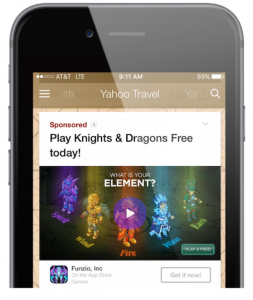
Also in November, Yahoo improved their ad platform Gemini with a new conversion optimization feature and added custom audience capability for in-app actions. Conversion optimization allows advertisers to set their CPA target and pay per click, offering a way to stay on budget while reaching your lead generation goals
Gemini’s updated custom audience feature is for mobile app marketers and can target audiences on PC, mobile, and tablet devices.
The enhancement allows advertisers to target shoppers, gamers, and browsers who have shown interest in their “products or services based on their in-app actions.”
AdWords Customer Match
Google’s latest feature helps advertisers reach their most valuable clients, the ones who have already purchased a product or joined a loyalty program. Marketers can now upload an email address list, which is then matched with signed-in users on Google. Once matched, advertisers can build campaigns and ads for that specific audience.
Google also creates a second list, a “similar audience” list, which is made up of people who share interests and behaviors with the people on your email list. Advertising to the second list, while excluding the first, can be a sound strategy.
Viewable CPM Campaigns
Why pay for a digital ad that hasn’t been seen? Google announced in November that all CPM campaigns (ones that are charged on a cost-per-thousand-impressions basis) are now viewable CPM campaigns. This means that marketers will not have to pay for an impression on the Google Display Network unless it’s viewable by a user.
Social Ads
If you haven’t started advertising on social media, it could be worth your investment because it’s paying off well for many marketers. According to a recent eMarketer’s report that surveyed 29 companies, paid social media advertising “is delivering a solid return on investment.”
When asked to grade a social network’s ROI on a scale of A+ through F, Facebook and Pinterest received an average grade of B and B+ respectively. LinkedIn got an average grade of C+, Twitter received a B+, and Instagram earned a C+.
Whether you’re new to paid advertising on social media sites or you’re a seasoned marketer, take advantage of these fancy enhancements to digital ads on Facebook, Instagram, and Twitter.
Facebook and Instagram Ads
Facebook Launches Video Slideshow
If you want your ads to feature video content but don’t have a lot of time or resources, Facebook has made it easy for you. Facebook announced in October the addition of Slideshow, a way for advertisers to build “video” ads from still images. You can upload three to seven still images at a time, either from a video that’s already made, a photo shoot, or stock photos from Facebook’s library. Marketers can edit the length of the slideshow from 5 to 15 seconds. Slideshow is available in Power Editor and Ads Manager.
Instagram Ads Releases New Objectives, Rolls Interface into Facebook Ads Manager
Instagram Ads can now be optimized for reach and frequency, a new feature advertisers can use with both Instagram and Facebook. Instagram has also made it possible for advertisers to deliver their ads to people who are “most likely to take an action on their website.”
Twitter Ads
Twitter Releases New Analytics Tool Brand Hub
The best analytics tools give us the information we need to tweak and improve our campaigns. The latest product in Twitter’s analytics toolbox is Brand Hub, a tool released in October that shows marketers a ton of information about their Twitter advertising campaigns.

According to the announcement, Brand Hub sheds light on the way customers talk about a brand on Twitter. This includes how many Tweets are posted about the brand or product and more. It also helps keep track of when users talk about a brand, and reveals detailed information about the audience, including their gender, location, occupation types and other demographic data.
Twitter Starts Testing New Native Ad Format
It’s time to tell a story with Twitter ads. In October, Twitter started testing Promoted Moments, a new ad format that turns Twitter Moments into ads. Moments was introduced a few weeks before Promoted Moments, and is Twitter’s way of bringing the best of Twitter to one place. By tapping a lightning bolt tab of the same name, you get to see a page full of created Moments. Twitter Moments tell a story and feature autoplaying images, videos, Vines and GIFS. With Promoted Moments, an advertiser can use a storytelling format to create an ad. It’s a unique way to engage your target audience and promote your brand.
Power Up Your 2016 Campaigns
A new year is an opportunity let go of the marketing strategies that don’t work and improve on the ones that do. Make sure your PPC strategies deliver increasing ROI by updating your campaigns with the latest paid search, display and social advertising features above.
Need help? Bruce Clay, Inc. offers world-class PPC management services for businesses that want day-to-day, hands-on support for their PPC advertising efforts. While we’ve been doing this for about 20 years, our company recently added top-ranked paid search expert David Szetela to the team to give you the ultimate edge of search advertising strategy.
One of your smartest New Year’s resolutions might be to talk to BCI!
November 25, 2015
What Bruce, Duane & the BCI Gang Are Thankful For! #Thanksgiving
What Bruce, Duane & the BCI Gang Are Thankful For! #Thanksgiving was originally published on BruceClay.com, home of expert search engine optimization tips.
From family to friends, travel to great jobs, babies to weddings, there’s a lot to be grateful for this year. Tomorrow is Thanksgiving, and in honor of the holiday, some of us on the Bruce Clay, Inc. team shared what we’re especially thankful for.
We are also particularly thankful for the new additions to our team: Duane Forrester, VP of Organic Search Operations, and David Szetela VP, Search Marketing Operations. Bruce Clay said it best when he said: “I am thankful that the company was able to add key leaders to our roster. Along with myself and the BCI team, we form a powerful force in the SEO and PPC space.”
Check out the slideshow below to find out what else Bruce and folks on our team are thankful for.
We want to say a collective thank you to all our readers and fans! Dedicated digital marketers and business owners are our inspiration when we craft content all year long, and we appreciate your readership, questions and comments. Thank you for inspiring us all year long!
What are you thankful for this year? Tell us in the comments, or tweet to us @BruceClayInc!







